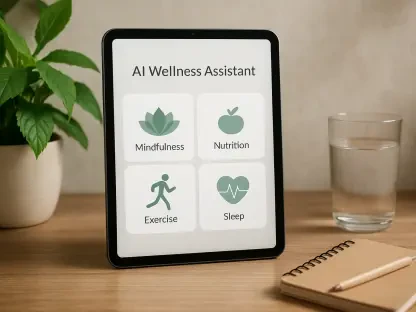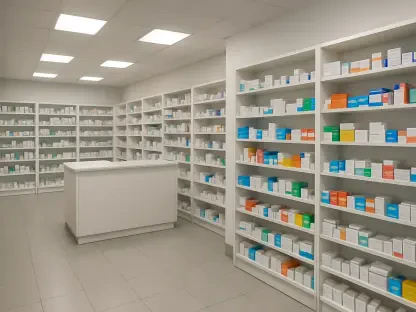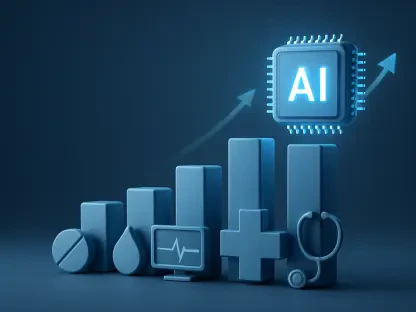In the rapidly evolving realm of healthcare technology, James Maitland stands out as a pioneer dedicated to leveraging robotics and IoT to revolutionize patient care. His insights into the intricacies of patient referral processes underline a commitment to resolving some of healthcare’s most pressing challenges. Today, we delve into the mechanisms behind Tennr, a company aimed at redefining patient referrals, the inspiration for its development, and the technological innovations driving its success.
Could you explain the “black hole problem” in patient referrals and how Tennr addresses it?
When patients are referred to specialists, the process can be incredibly opaque and inefficient. This “black hole problem” refers to the lack of visibility and frequent delays between referral stages, where patient information often gets lost, causing care disruptions. Tennr’s AI model shines in resolving this issue by automating workflows, ensuring smooth intake of documentation, and providing real-time status updates to both patients and providers. This alleviates the chaos and keeps patients within the system for timely care.
What inspired you to create Tennr and focus on the patient referral process?
My motivation stems largely from personal experience. My mother, in her role in family medicine, often discussed the chaotic handoffs between providers. Witnessing firsthand how slow and complicated these processes could be ignited a passion to create Tennr and focus squarely on patient referral dynamics. Our goal was to bring efficiency and clarity to a situation many saw as a significant bottleneck in healthcare.
Tennr developed language models to assist in reading referrals and extracting information. How does this technology differ from other AI systems?
Tennr’s language model, RaeLM, is specifically tailored for healthcare. Unlike generic large language models, RaeLM is trained to understand the nuanced data found within clinical notes, scanned forms, and complex payer criteria. This specialization enables it to flag potential denials and ensure submissions are complete and accurate from the outset, thus reducing errors and speeding up processing.
How has Tennr managed to integrate its AI within existing tools that healthcare providers use without requiring a major shift in their processes?
We made a deliberate decision to design Tennr to complement existing systems, refusing to force a new way of working onto healthcare providers. By building alongside the current workflow and tools, Tennr fits seamlessly into the ecosystem, eliminating the need for EMR rip-outs or provider retraining. It’s about empathy for specialist workflows and creating software that enhances rather than disrupts.
Tennr’s RaeLM is described as a vision-language model. Can you explain what it does and how it analyzes healthcare documents?
RaeLM combines the power of visual and linguistic processing to meticulously interpret and understand unstructured medical records. It’s optimized to synthesize data from these documents against extensive payer criteria, structuring it into a system that can identify gaps, flag potential denials, and ensure cleaner submissions for healthcare providers.
How does Tennr’s Network enhance visibility for patients and healthcare providers during the referral process?
The Tennr Network is a transformative tool that provides real-time visibility across the referral journey. It allows referring providers to track their patients’ current status, while receiving providers can monitor incoming referrals, documentation needs, and successful conversions. Patients get the added benefit of knowing their referral status, the scheduling, and financial expectations, significantly reducing the common miscommunication in the process.
What specific improvements have you seen in patient adherence and satisfaction since launching the Tennr Network?
We’ve observed substantial increases in patient adherence to their referral process, with patients now confidently moving through each step with clear insight into what to expect. Service satisfaction has equally improved, as patients appreciate the transparency and reliability the network offers. We’re seeing patients reach their care endpoints more consistently and efficiently.
Could you expand on the different product lines Tennr has created beyond patient intake and documentation review?
With RaeLM’s capability to structure data effectively, we’ve expanded Tennr beyond its initial offerings. Now, we have products like eligibility benefits, a qualifications billing engine, a communication coordinator, and an auth review tool. We’re also developing a robust patient experience platform, all designed to comprehensively address the intricate needs of healthcare providers and patients.
How does Tennr manage to keep error rates low and process times fast in handling 10 million documents a month?
Our focus is on rigorous AI training and continuous system optimization. With each document processed, RaeLM gets better, offering remarkable accuracy and speed. By leveraging advanced language and vision models specifically catered to healthcare nuances, Tennr ensures rapid, reliable processing without compromising on quality.
You mentioned that Tennr hasn’t “touched” its series B funding yet. What strategic plans do you have for the series C funding?
With series C funding, we’re aiming to expand our engineering team and deepen our expertise in billing criteria and referral management. We’re also investing in go-to-market strategies to further penetrate the market and enhance operational capabilities. Our intent is to remain at the forefront of innovation in healthcare technology.
Ty Barnett from Norco Inc. praised Tennr’s impact on their workflow. Can you discuss some specific success stories or feedback you have received from healthcare organizations?
Ty Barnett’s feedback is a testament to Tennr’s efficacy. Many organizations have reported significant reductions in manual workload and human errors, alongside boosted operational agility. These changes not only save time but reinforce our mission to provide better patient and practitioner experiences by synchronizing workflows and enhancing overall efficiency.
With Tennr’s growth and new funding, what are the next steps for scaling the company and expanding its reach among healthcare providers?
Expanding our product suite and entering new markets are crucial next steps. We’re looking at scaling operations, employing strategic partnerships, and enhancing customer support. Our expansion isn’t just about increasing revenue but truly improving healthcare outcomes across a broader spectrum of providers and patients.
How do you ensure Tennr adheres to complex payer criteria efficiently?
We’ve designed RaeLM to intricately understand and apply complex criteria in healthcare documentation. Continuous model training and updates ensure that Tennr remains aligned with evolving criteria, so payer submissions are both efficient and accurately prepared. This adaptability is key to maintaining compliance and optimizing referral completions.
Can you talk about how Tennr’s technology addresses miscommunication and missing information, which are common issues affecting referral completion?
Miscommunications and missing information can derail successful healthcare referrals. Tennr’s AI focuses on accurately parsing documents to extract and route essential data, reducing these errors. Our system ensures that critical information reaches the right stakeholders at the right time, minimizing misdirected referrals and associated complications.
What role do early tests and continuous updates play in Tennr’s technology development process?
Early testing is integral to refining our solutions, pinpointing strengths, and revealing areas for enhancement. Continuous updates are necessary to address market demands and integrate feedback from healthcare providers. Through this iterative cycle, Tennr maintains high standards of reliability and improves user experiences consistently.
How does your personal experience with healthcare delays influence Tennr’s mission and operations?
Personal encounters with healthcare delays, especially observing them in close familial and personal scenarios, deeply shape Tennr’s mission. These experiences underscore the real-world need for accelerated, transparent referral processes that motivate our operations, drive innovation, and fuel a commitment to meaningful improvements in healthcare access.
Do you have any advice for our readers?
My advice would be to keep patient-centricity at the forefront of healthcare solutions. Technology should enhance and complement existing practices, smoothing out bottlenecks without disrupting valuable systems. Embrace innovations that ingeniously integrate into current workflows, ensuring quality care remains a constant priority.









